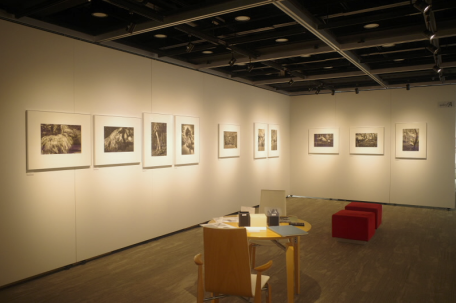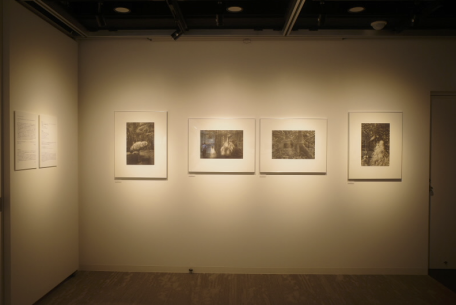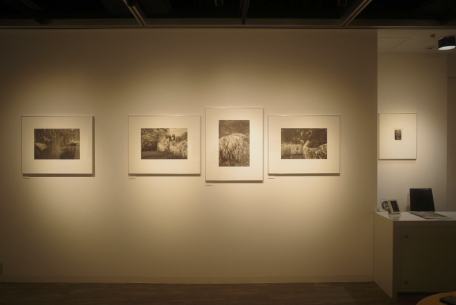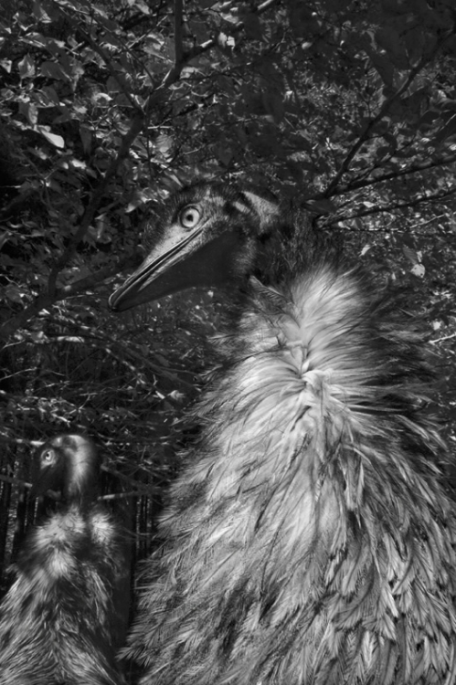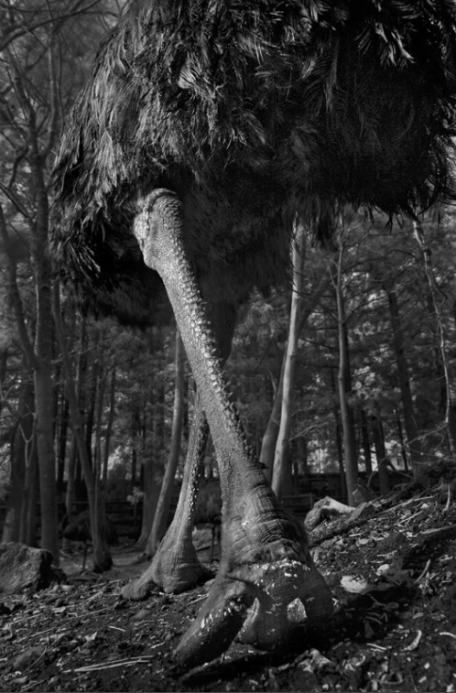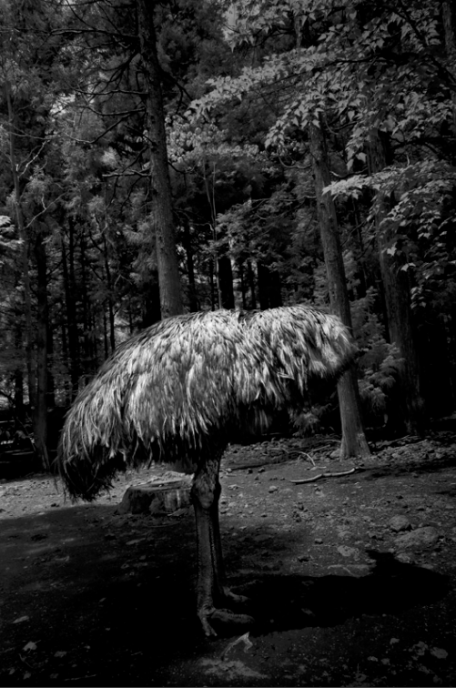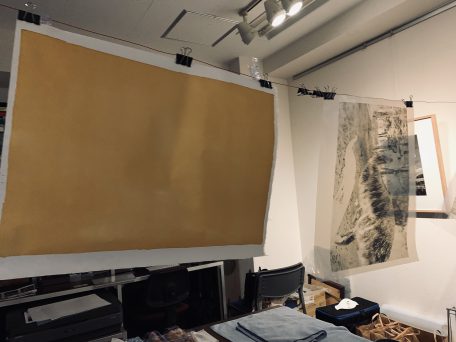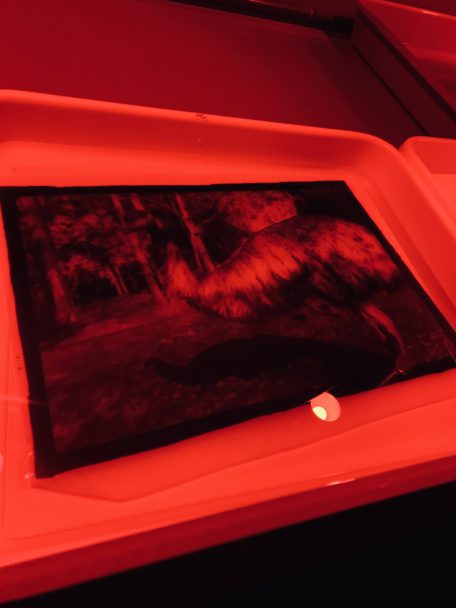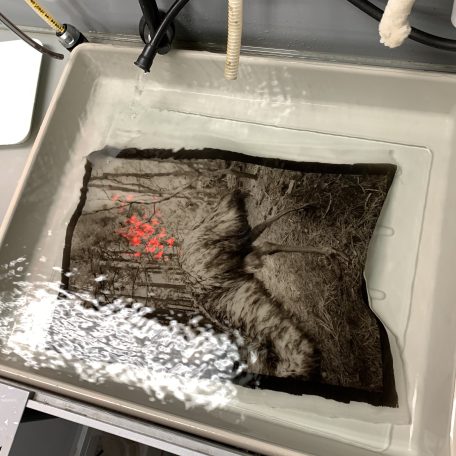Interview Minority Shape-“Bird-Dromaius / to Platinum” (Interview with Hisako Sakurai)
2022.03.26
Go to interview 【Japanese】
Minority Shape-“Bird-Dromaius / to Platinum” (Interview with Hisako Sakurai)
Hello
I’m Okubo (O), a product planner who is both a camera and a photo nerd.
I also take pictures of birds. I take pictures of birds on the tidal flats, but they are very cautious and fly away immediately when I get close to them carelessly.
I am shooting while being nervous with a delicate sense of distance.
Some birds in the world cannot fly. For example, an emu has wings but cannot fly.
Birds are broadly divided into Palaeognathae and Neognathae. Emu are classified into the same Palaeognathae as ostriches and kiwis, however there are about 10,000 species of birds in existence, of which only about 60 are Palaeognathae.
It can be said that it has evolved in detail while looking aside at the prosperous Neognathae. The emu is as tall as 1.5m to 2m and weighs 40 to 60kg. It is said to be No. 2 in size among existing birds.
For his big body, he is less alert to people, sensitive to noise, and seems to be quite mild-mannered.
At Gallery A of Ricoh Imaging Square Tokyo, an exhibition “Birds-Dromaius / to Platinum” ( >> photo exhibition outline ) by Hisako Sakurai (S) with the emu as the subject is being held. This is an impressive infrared photo of Emu, displayed in platinum print. The exhibition room is a little dark to make it easier to feel the atmosphere of the photographs.
I think that it is common to take cute animal photographs in color that you all know.
The photos on display this time look a little different (the photos introduced here are digital data, so they look different from the platinum prints on display).
A big bird nestled in the forest. The legs are thick, the torso is round, the neck is long, and the eyes are sharp.
Because of the infrared photography, the forest also looks fantastic and gives the viewer an abstract image.
In addition, there is no color information, and a photograph with only “feet” inevitably comes to mind the shape (form) of “feet”.
When the neck is hidden, it looks like a mysterious “thing” instead of a bird. To be honest, I can’t say that it’s so cute (I’m sorry Mrs. Sakurai!).
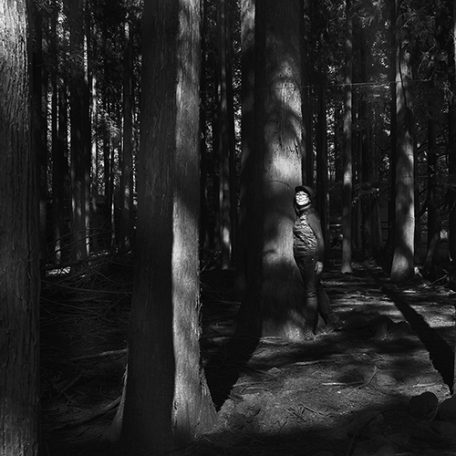
Born in Tokyo. Graduated from Parsons School of Design. Currently based in the Kanto area. Major Photobooks
“Forms” (published by Sokyusha , 2013)
“Bird-Dromaius” ( published by private edition , 2014)
Collection: Kiyosato Photo Art Museum (1996, 1998, 2000)
<forms and ballet>
I was a little surprised when I went to see Ms. Sakurai’s HP (>> Hisako Sakurai ).
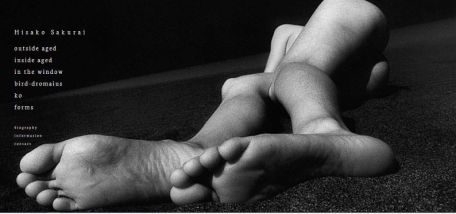
I was a little surprised when I went to see Mrs. Sakurai’s HP (>> Hisako Sakurai).
It was a “foot”. When I went to see the website, Mrs. Sakurai’s work appeared randomly, but in my case, this picture came out.
Overwhelmingly conscious of the shape of the foot.
This is one of Sakurai’s early works “forms” (>> forms ).
“Forms” is a picture of a person, but it’s a little different from a portrait. There are many photographs that emphasize the parts of the body such as hands and feet, with almost no face reflected.
Looking at the work of “forms”, we can see the commonality in terms of the photographs of the parts that make up the body with this “bird-Dromaius”.
Looking at the process that led to the shooting of “forms,” I thought that I could get a deeper understanding of her intention of this work, so I decided to ask her the reason to start taking photos.
S: I learned photography at the Parsons School of Design. The teacher was an artist named Marcia Lippman and was an alternative class (classical technique). For example, I used to do gum print (* 1).
At first I used monochrome films, but gradually I started using Kodak At first I used monochrome films, but gradually I started using Kodak infrared films. At that time, silver halide photography was fine, and there were plenty of films and photographic paper. I didn’t mean to be particular about infrared films, but I liked working in the darkroom. The color photo didn’t suit me because the darkroom was pitch black.
O: I think there are many photographers who attended domestic schools, but I haven’t heard much about those who go to overseas schools. Why did you go to an overseas school?
S:
I used to play ballet. Ballet was the center of my life. When I entered junior high school, I felt the limit and quit, but after I quit, my heart became blank. The purpose of doing something was gone.
I wanted to do something there, but I couldn’t find it in my high school life.
I think I was influenced by my dad’s love for cameras and taking pictures with Leica, but I praised myself as I hung the pictures of casual landmarks I took when I traveled to New York on the wall. The reason was that a friend who saw it asked me to do a photo and I jumped out of my house.
O: It’s amazing to jump out and suddenly go to America. How was your study at the American photography school?
S: First of all, I had a hard time because of the English barrier. I learned the history of photography. Also, the workshop was evaluated with the work as it was seen, so it was very rewarding. There will be challenges in the workshop. For example, in a journalism class, you are told to chase an ambulance and take pictures even if you take a taxi.
On the technical side, there was a class on how to use a large format camera (4×5).
O: Do you feel like you have awakened to your style after a school task?
S: That’s right. At school, I was taking portraits and people.
O: From there, I think it will lead to the first work “forms”, but you don’t see any face in the “forms” photo.
S: “forms” was taken for almost 20 years, and at first I took it with the face in it. Gradually it became only the body. Portraits are now taken separately.
O: If you want to shoot only the body, I think it’s easier to clarify the shape in the studio. Why did you shoot it outdoors?
S: I’m crazy about it while shooting, and I don’t really think about my intentions. When I think about it later, I think that it is one staging because of the background. It may be the background of the ballet stage.
O: Why do you shoot the hands and feet of your body as parts?
S: At first, I couldn’t clarify the reason in words. I’m not conscious of why, but I’ve taken pictures of body. I think it featured my weak points when I was playing ballet.
I was learning ballet in a pretty tough classroom. There were many people in the classroom who had the same lesson content as I did and were better than me. Some later became famous dancers. Such a person does not shake even at the recital. There was a sense of security in the dance.
I was wondering why I couldn’t do it even though I had the same education.
I felt the difference between what I originally had. I’ve always felt shortcomings about my own reflexes and poor sense of pitch.
I think that any exercise is the same, but the important point is that the torso (trunk) is the axis, and without that strength, it is very difficult to express with the body. Even if only one expression of the hand is used, the impression given will change depending on the appearance and shape.
In particular, ballet is expressed physically without words. Even though they are the same person, there are differences in their bodies.
I think it is a form. After suffering from the shortcomings came to the desire to take a closer look at the outline of the human body that was the source of the weak pints.
“Forms” is taken with infrared film, and the skin can be seen through. Being able to see the blood flow may mean that I have a desire to see inside the body, or even the bones. I want to see what is happening to the human body.
- 1) Gum print: One of the classic techniques for photographic printing. It is said that the gradation is narrower than that of silver halide print and it tends to be pictorial. The negative is brought into close contact with the emulsion-coated paper for exposure. It was popular in Japan during the Taisho era, and Yasuzou Nojima is famous.
<Genes and Platinum Print>
The subject of this exhibition is not a person but an emu. Why did Mrs. Sakurai, who was so interested in the shape of the body, take an emu? The question is mentioned in this special dialogue (>> special dialogue).
Ms. Sakurai was introduced by her mother to the place where Emu was, and was very impressed. It was just the timing when I changed the camera from film to digital, and I continue to shoot as a new theme.
O: I feel that this exhibition follows the flow of “forms”. Both “forms” and “Birds-Dromaius” have their body parts taken outdoors. Speaking of ballet, I feel that the performers (people, emu) and the stage (sand, forest) are different. Yoko Matsuda, a photographer with the same ballet motif, compared the composition of the exhibition to the curtain of ballet ( >> Interview with Hikari Tayu ).
Did Ms. Sakurai, who has experience in ballet, imagine ballet in this photo?
S: Speaking of ballet, I think the typical image is a pure classic Sleeping Beauty, Swan Lake, the Nutcracker, and so on. Even a simple story is the most difficult to dance, and even in the same story, the expression changes depending on the dancer, so it is spectacular and very wonderful.
Of course, the influence of these works is great, but apart from that, the crazy favorite stage was made by a choreographer and artist named Maurice Béjart, who is said to be the greatest master of choreographers in the 20th century. His famous performances were Bolero, The Rite of Spring, and more recently, a performance commemorating the 50th anniversary of the death of “M” Yukio Mishima (>> Bolero video). You will always be taken to the magical world of Béjart. Alien world? that you feel through my photos could greatly be influenced by his work of art. (lol)
Certainly, when you look at Béjart’s Bolero, only “hands” appear at the beginning. It is exactly the “hand” as a part of the body. I strongly feel the connection with Mrs. Sakurai’s work.
O: Is the composition of the exhibition influenced by ballet?
S: Regarding the exhibition, the intervals between the photographs are slightly changed so that you can feel the sharpness, pulling, and movement. There are also movements of birds and quiet parts. Emu has straight legs and looks like wearing a tutu. The way these birds walk is the movement of the dancer itself.
This is a movement that dancers have to emulate. It moves like kicking the floor properly.
(Mrs. Sakurai was demonstrating by bending her toes and moving the back of her foot from the tip to the heel, slowly tracing the floor.)
In this exhibition, the hair is raised from the backs of these birds, and the movement like a mountain flow is included. I would like to express it in a different way from the physical forms such as “forms”.
O: In this exhibition, the neck, head, torso, and foot parts are taken in the same way as “forms”. There is also a picture of Emu’s face this time, and are you aware of it?
S: I’m not aware of it. Regarding the face, when expressing the form of the body, if the face is reflected, the information will be strong, so I think that I did not include it. Also, Emu is actually a more modest child. The impression has changed because I am taking infrared photography.
O: Is it the same as “forms” to shoot in the infrared even if you change the impression, and is it the same as looking into a person?
S: That may be true. Their hair is actually brown and very cute. Its nature is gentle though it has a too strong face. The impression of infrared photography changed, and I found the imbalance between the appearance and characters to be very interesting.
Mr. Matsuda expressed the exhibition as one performance, but in the case of Mrs. Sakurai, I felt that the stage was reproduced with each photograph.
I had seen the photobook “Birds-Dromaius” in advance, but the impressions of the photos in the photobook and the platinum prints in the exhibition are quite different even if the originals are the same.
The photobook has a cool feel that makes you aware of infrared photography, but the platinum print photographs are reminiscent of albumen print photographs. It is soft and warm and makes you aware of paper.
I feel that the unusual texture of infrared photography is suppressed.
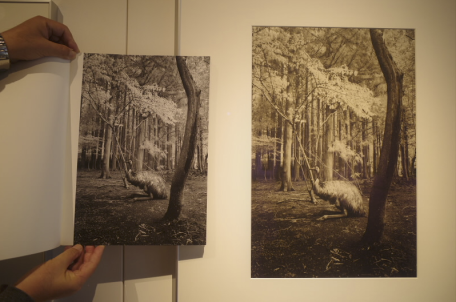
O: The impressions of the photos in the photobook and this platinum print are quite different. Can you tell me if there is a difference?
S: When I made the photo book, it was an inkjet print at the time of the previous exhibition. I think this platinum print is the final point of this photo. The softness of the hair, the fluffiness that makes you feel like you can grasp it, and the fluffy feeling are unique to platinum print. Inkjet printing inevitably hardens.
O: To get the feeling that Emu has inherited the genes from ancient times, platinum print, which has a strong sense of history, is better than inkjet print, which has a strong digital feel. However, I heard that it is difficult to produce platinum prints, but what about the actual situation?
S: Apply a photosensitive material (platinum, palladium) to Japanese paper with a brush and let it dry for 30 minutes. Put the digital negative in close contact and expose it with ultraviolet rays, then put it in a developing solution and wash it with water. The Japanese paper is easily torn, so I put it on the glass.
[Developing in a dark room]
[Photo taken during washing with water. You can see that Japanese paper is floating from the glass stand]
S: I had a lot of trouble with trial and error until I arrived at this technique. Thank you very much to Mr. Inomata of Atelier Chateine (>> HP).
During the interview, Ms. Sakurai was very appealing about the cuteness of Emu.
Mrs. Sakurai was interested in the unique appearance of Emu when shooting it, and I think it was shot using the same method as “forms”. However, in this “Bird-Dromaius / to Platinum”, unlike “forms” that bring out the form to the front, by expressing it with a soft platinum print, two contradictory elements of Emu’s strong expression and gentle personality are expressed as 1 image. I think she has succeeded in including it in the photos.
Why don’t you come and see it?
A mysterious platinum print that feels kindness, although it has an unrealistic feeling peculiar to infrared photography. It’s recommended.
Finally, I asked about Mrs. Sakurai’s future activities.
S: I’ve already finished shooting Emu, and I’m thinking of collaborating with Emu and ballet in the future. The forms of these birds seem to be dancers, so they have a common look.
I take a dancer to take a picture, but Emu doesn’t come to the side. They come at first, but they get bored and go somewhere. Shooting is quite difficult (lol).
I would like to express the form of Emu and the form of dancers well with photographs. So I think this series is over.
As I wrote at the beginning, Emu cannot fly in the sky. Among birds, the emu belonging to Palaeognathae can be said to be a minority. Emu, who has few friends and cannot fly, feels like he has a shortcoming.
The atmosphere created by the gap between the strong facial expression and gentle personality of the minority Emu. The atmosphere may have resonated with Mrs. Sakurai’s shortcomings. It may be interesting to find something in common with Diane Arbus’s photographs of minority people.
From now on, it will be a collaboration work of Emu and ballet. I am very much looking forward to what the photo looks like in the future.
- At Ricoh Imaging Square Tokyo / Osaka, we ask for the following cooperation when visiting the museum as part of measures to prevent the spread of new coronavirus infections.
- ・ We will measure the temperature at the entrance. (A non-contact thermometer will be used)
- * Those who are above 37.5 ° C will not be admitted. Please note.
- ・Please cooperate in admission after disinfecting your hands.
- ・ Please be sure to wear a mask when you come to the museum.
- ・ Please note that admission may be restricted depending on the situation so that it will not be overcrowded.
- ・ Please cooperate in ensuring a social distance (about 2m) between customers in the venue.
- ・Please refrain from visiting the following people.
- ・ Those who have a cough.
- ・ Those who have a fever of 37.5 ℃ or higher.
- ・Others who are in poor physical condition.
We apologize for the inconvenience and thank you for your cooperation.
profile
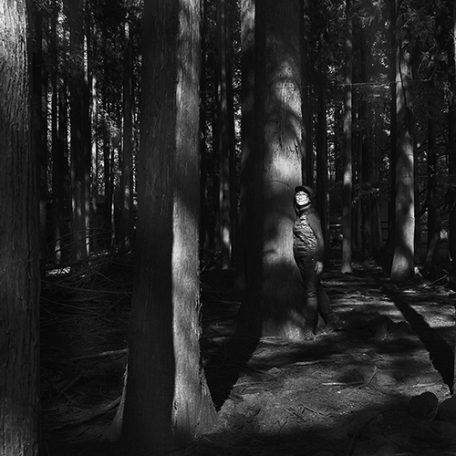
Born in Tokyo. Graduated from Parsons School of Design. Currently based in the Kanto area. Major Photobooks
“Forms” (published by Sokyusha , 2013)
“Bird-Dromaius” ( published by private edition , 2014)
Collection: Kiyosato Photo Art Museum (1996, 1998, 2000)
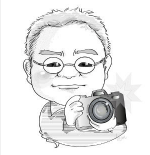
(Interviewer / employee sal) A male living in Kanagawa prefecture. We are planning products. I’m a camera (photo) nerd who likes photography.
